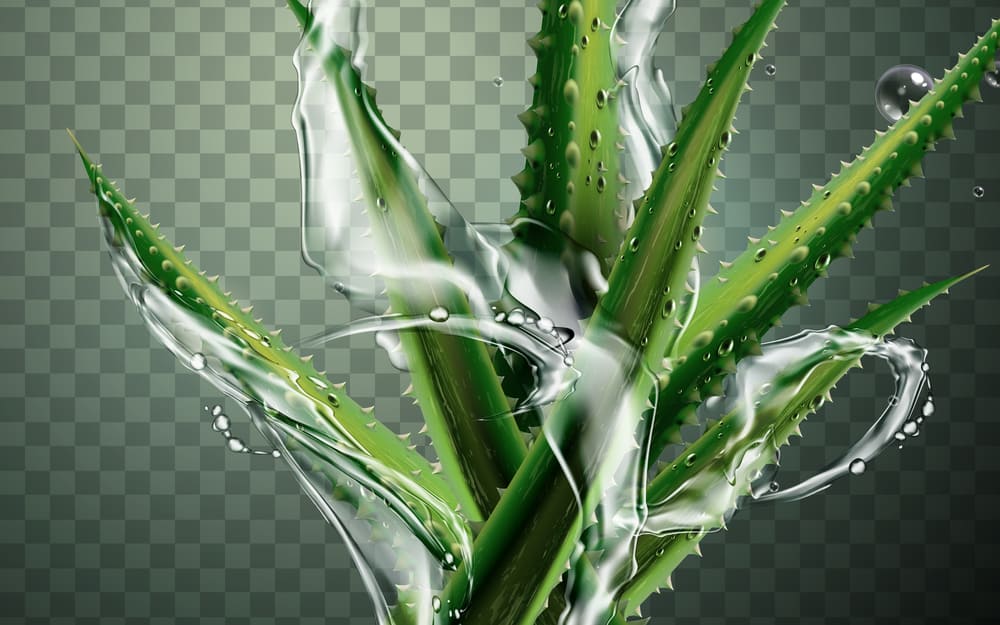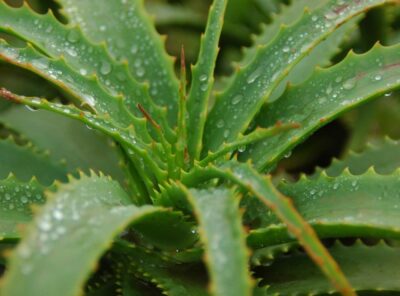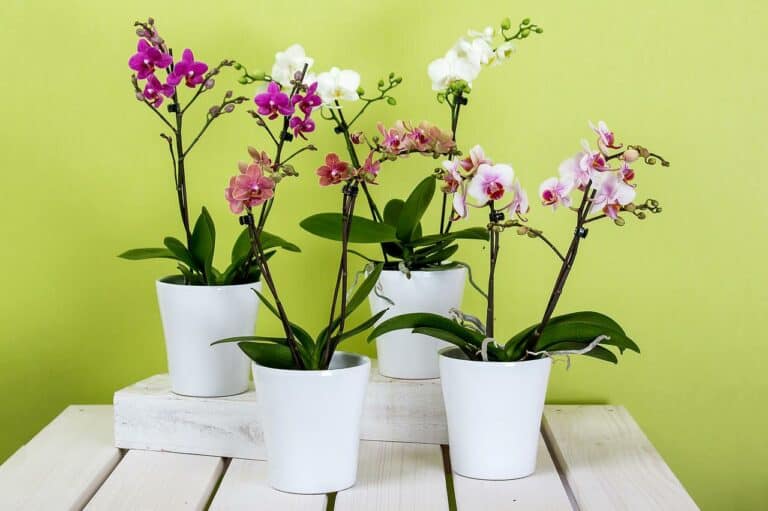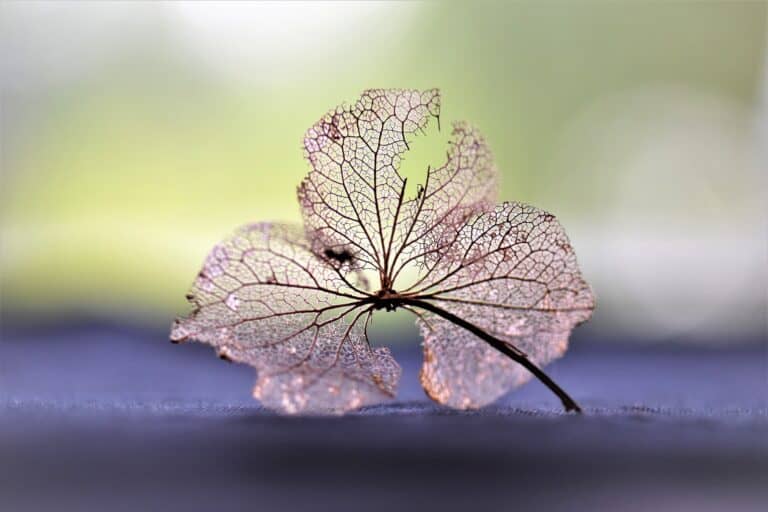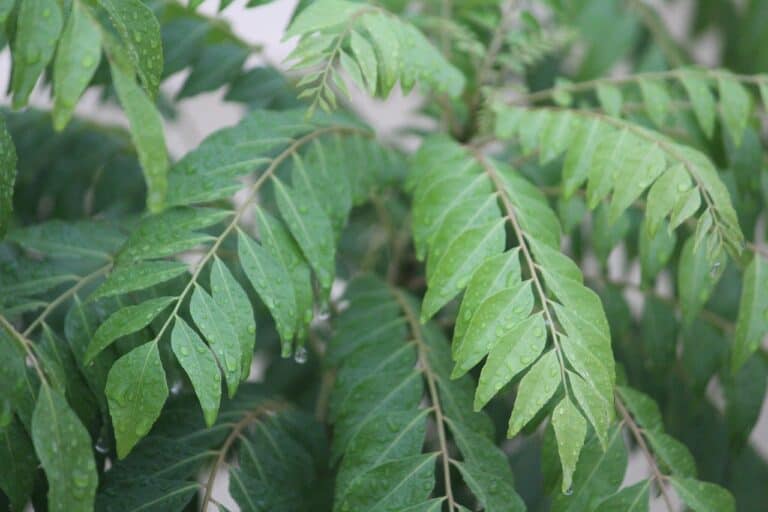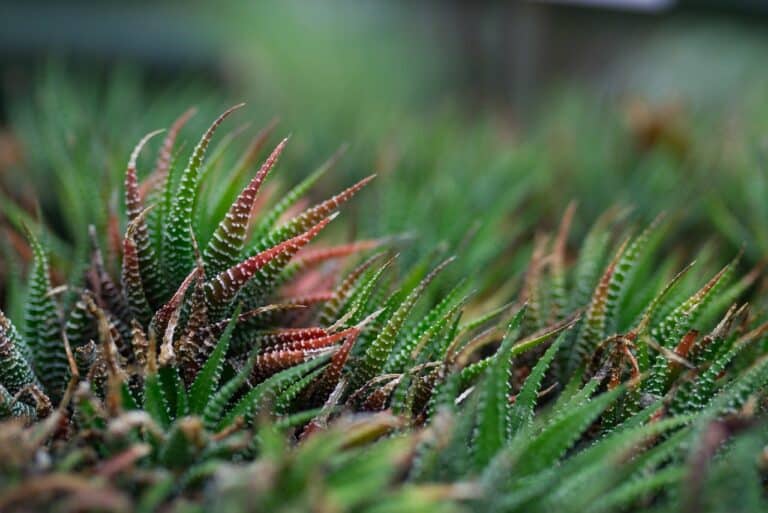Table of Contents
1. Fan Aloe (Aloe Plicatilis)
The Aloe plant is native to Africa and has been cultivated since ancient times. Its long, thin leaves resemble the palm tree, hence the name “palm leaf.” This Aloe is known for its beautiful blossoms in shades of red, pink, purple, white, yellow, and even green. Not only is it a great cut flower, this plant is easy to care for and requires very little water.
This perennial plant does best in full sun and well-drained soil. However, it thrives in warm temperatures and needs regular watering during dry spells. To keep it healthy, fertilize regularly with a balanced fertilizer.
2. Golden Toothed Aloe (Aloe Nobilis)
This Aloe has bright green triangle leaves, including whitish teeth along each side, and the leaves turn a beautiful orange color when fully exposed to the sun.
Bright-orange tubular flowers occur in spring and can grow up to 2 feet tall, and the plant produces many large, showy blooms, making it ideal for use as a groundcover or border.
They require full sun and sandy, well-drained soils.
3. Malagasy Tree Aloe (Aloe Vaombe)
The tree aloe, sometimes called the giant Aloe, is one of the largest flowering plants known. It can increase in height to 12 feet. and five feet wide, producing bright red blooms. This plant is native to Madagascar and grows along rivers. It is considered to be practically free of diseases, making it perfect for use as a houseplant.
4. Mountain Aloe (Aloe Marlothii)
This genuinely magnificent succulent forms a densely clustered group of gray-green leaves, each tapering to a strong point. With reddish brown spines and tubular white flowers that appear in winter, this Aloe grows to around 10 feet tall and makes a fantastic accent plant or container plant. The flowers start bright red but change color to yellow or bright red later on. They are beautiful to hummingbirds and bees.
5. Red Aloe (A. Parviflora L.)
The Madagascar aloe is a small evergreen shrub that grows up to 50cm high and 50cm wide. It has thick leathery leaves with a bright red center. These leaves contain anthraquinone glycosides called aloin A and B, which are thought to be responsible for the plant’s medicinal effects.
Aloes are traditionally used to treat many ailments, including rheumatism, arthritis, skin conditions such as eczema, psoriasis and dermatitis, stomach ulcers, and cancer. They are also known to help prevent sunburn and reduce inflammation.
6. Red Aloe (Aloe Rubrobrunnescens Hochst. ex A. Rich.)
The “red aloe” plant is native to West Africa and grows up to 50 cm high. It produces large heart-shaped green leaves with a bright red inner core. Its gel contains anthraquinones that may help fight certain cancerous tumors.
7. Sand Aloe (Aloe Hereroensis)
This plant’s blooms and leaves are both unique, with the leaves being covered in tiny, sharp hairs that look like sandpaper and the flowers having a large, yellowish-orange tube that extends out of the center of the flower.
8. Short-Leaf Aloe (Aloe Brevifolia)
Short-leaf aloes are easy to care for. They do best in full sun, where they like well-draining soil. If grown in sandy soils, they must be fertilized regularly. To keep plants healthy, water thoroughly during dry spells. Removing spent flower stalks will promote new blooms. When growing short-leaf aloes in large groups, it is essential to provide adequate space between plants. This allows roots to spread out without crowding one another.
9. Aloe Capitata Var. Quartziticola
Aloe plants are well known for producing succulent leaves that grow into thick stalks. This species is one of the wide aloe varieties with a flowering stem called a “crown.” These crowns can reach heights of several feet, making them perfect for garden accents. In addition to being beautiful, aloes make great houseplants because they’re easy to care for and require little water once established.
10. Soap Aloe (Aloe Maculata)
This Aloe is native to Southern Africa and is one of the most popular plants used by gardeners because it does well in many climates, including hot ones. Its thick, sword-shaped leaves are greenish-gray in color and grow up to 12 inches long. They are topped with small, pointed, toothless lobes and look like miniature swords. This Aloe loves water and gets about 10 hours of sunlight per day. It produces little clusters of flowers in the winter, orange flowers that resemble little oranges.
The soap aloe is easy to care for; keep it watered during dry spells. Take cuttings from young stems in late summer if you want to propagate this plant. You can also buy seeds online.
11. Spiral Aloe (A. Gerrardii Baker F.)
The Spiral Aloe is native to Australia and New Zealand. It grows to 2 meters tall and produces thick stems coated in soft, silky hairs that spiral around the stem. Its gel is used in cosmetics and lotions for its antiseptic and anti-inflammatory properties. The gray-green leaves on this plant form a perfect spiral shape and have white to pale green spines along the edges and dark, purplish brown at their tips. When it doesn’t flower, the plant looks like a miniature tree.
Although it rarely flowers, when the plants do produce flowers, they’re salmon pink and tubular. The winners of numerous international flower awards, the Spiralflower does best in full sun and is drought tolerant and deer resistant.
12. Sunset Aloe (Aloe Dichotoma Burm. F.)
The Sunset Aloe is native to South Africa and grows in sandy soil. It likes hot weather and does best in areas with no frosts. This plant is straightforward to produce and requires little care. It needs regular watering during dry periods, especially in the summertime. You don’t need to water it in winter unless the soil dries out completely. To propagate this plant, cut off the flowering stem and place it in a pot filled with moist sand. Place the pot outdoors in direct sunlight. In about three weeks, the roots will start growing. When the roots reach around 8 inches long, you can transplant the plant into a larger container.
13. Tilt-Head Aloe (Aloe Speciosa)
The Tilt-Head Aloecan reach heights of up to ten feet tall and have long, narrow leaves that curve upward at the tip, making the plants look like they’re leaning over. They have three distinct colors – red, yellow, and cream – and are covered in small, pointed thorns. These thorns make the plants very difficult to move around, and they don’t like being disturbed. However, hummingbirds love them because they eat nectar from the flowers.
14. Torch Aloe (Aloe Arborescens)
This is a unique plant in the aloe family. It has attractive foliage and colorful flowers that attract attention, making it a good choice for attracting butterflies and hummingbirds. However, it does require some maintenance. To keep it appearing tidy, it needs to be pruned frequently.
Growing and caring for the plants is simple and do best in full sun, although they tolerate partial shade. They prefer rich soil and water regularly during dry periods. If you live in an area where temperatures drop into the 40s F, consider growing one indoors under lights.
15. Tree Aloe (Aloe Barberae)
A tree aloe is a beautiful plant that grows to about 60 feet tall and wide. They bloom in the wintertime with bright red flowers that look like little bells. This type of Aloe is native to South Africa and can be found growing wild throughout the world.
There are wide varieties of tree aloes, such as the Aloe Pillansi, which grow to 30 feet in height and look like a cactus. Another type is the Aloe dichotomous, also known as a quiver tree. These trees can reach heights of over 30 feet and produce large clusters of white blooms that resemble tiny umbrellas.
Different Types of Aloe Plants


